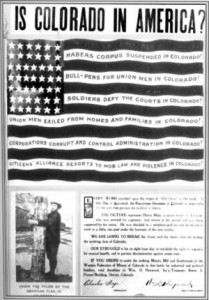Review by Mark Schiller
Rural life – August 2003 – Colorado Central Magazine
The River in Winter
by Stanley Crawford
Published in 2003 by the University of New Mexico Press
ISBN 0826328571
FOR THOSE OF US who try to keep the rural communities of northern New Mexico and southern Colorado viable in a world that’s growing increasingly hostile to their values, Stan Crawford is a tribal elder. By that I don’t mean it’s time to consign him to the spring ice flow, but rather that he’s spent many years closely observing the interplay of land, water, people, animals, plants, and institutions upon which the culture and economy of El Norte is based and brings an incisive and straightforward intelligence to his writings about this place from which the rest of us draw insight and inspiration.
In his two previous non-fiction books, Mayordomo and A Garlic Testament, Crawford described the routines and vagaries of being a small scale farmer, from allocating the irrigation water to bringing his crops to market, with wit and eloquence. Like Thoreau, he passionately believes in the virtue of living simply by the labor of his own hands and has little tolerance for people who, in Thoreau’s words, “are so occupied with the factitious cares … of life that its finer fruits cannot be plucked by them.”
In one brilliant section of A Garlic Testament, for example, Crawford gives his response to a question he’s asked endlessly at the Farmers’ Market: “Is your stuff organic?” After responding in detail about his own attempts to be “organic” he asks the questioner: “What about your life? Is it organically lived? … And if I may ask, what about the money you would offer to pay me with? Is it organically earned? In short, how have you managed to solve these problems in your life? Have you actually figured out how to live a clean life in a dirty age?”
NOW, IN HIS NEW BOOK of essays, The River In Winter: New And Selected Essays, Crawford brings that same reserved and sardonic voice to bear on subjects ranging from the micro to the macro. In one essay he describes the mud floor he and wife Rose Mary poured in their living room in 1971: “The history inscribed in the surface of our mud floor is a version of the history of the house we built with our own hands and our lives in it since 1971. I re-read it often in tiny granular episodes, during moments of rest, staring into space, daydreaming and in those pauses between the major domestic events of the day.”
In other essays he discusses the problems globalization poses for northern New Mexico: “Northern New Mexico is as good a place as anywhere to look at the pathological effects of economic development: degraded rivers and streams, clearcut forests, stripmined mountains, an excess of wealth concentrated in Santa Fé and Los Alamos, cheek to jowl with some of the poorest counties in the nation, indigenous cultures pushed into maginalization, and a military death machine at the heart of it all.”
And it is precisely this dichotomy between the local and the global, the rural and the urban, on which Crawford focuses much of his attention. In the final essay, “How To Get Rightside Up Again,” Crawford has an epiphany after a dinner party conversation during which he feels he inadequately responded to his host’s question of what he would like to see happen in the future regarding small farming and acequias:
“The world is upside down … so turn it rightside up. Upside down? In agriculture, large corporate producers can outprice small producers because they don’t have to factor in the costs of pollution, soil loss, health effects of pesticides and herbicides and nitrated-up groundwater, fossil fuels depletions, full benefits for farm laborers, and the withering away of village and small town infrastructures…. Agriculture is our greatest source of pollution. When such costs are finally paid for by the producers and no longer by the taxpayer, then the cost of agribusiness-produced food will reflect the realities of monstrous feedlots, manure lagoons, and a billion pounds a year of herbicides and pesticides spread across the land.
“And then, rightside up, guess what: organic crops produced by small farms will not only be cheaper than agribusiness food, but organic products will be, as they have always been, better tasting, more nutritious, and healthier for everybody who has anything to do with them up and down the food chain. Take away all those subsidies that agribusiness has been destroying the world with and give them to small organic producers who are doing things the right way and then you will see your small farmer outbidding developers for farmland and water rights … and pushing city limits back to where they belong. Presto, everything is rightside up again.”
Crawford goes on to say, as many people now believe, that “increasingly acute environmental crises” will inevitably bring this issue to a head. He shares a belief with Wendell Berry, among others, that the most effective way to fight the oppression and excesses of globalization is by working regionally to revitalize local economies and preserve traditional knowledge.
In other essays Crawford speaks about the dynamics of rural communities with a depth of insight that made me shudder: “Sometimes I think that the power of this thing, the collective novel of the village in which I play the part of a character I can never know and a contributor whose words I immediately lose control of, explains everything that seems to go wrong in a small place: the self-inflicted wounds, the scapegoating and witch- hunting, the stifling of initiative, the inability to coöperate in a positive way.”
Or again: “The village teaches you the hard lesson that you have to die, and the village funeral is where you cannot escape your fate. It is where you will hear the official truths called out from the pulpit or the graveside.”
And then by contrast: “Perhaps one of the reasons people leave villages all over the world is that they want to live in places where the lesson is not so relentlessly taught. Suburbs are places without graveyards, without necropolises. They zone out the dead. Like garbage and sewage, the dead are ferried away to special ghettos elsewhere — or anywhere.”
And finally: “I know our side of the little valley and all the people who live there so well I sometimes wish I could forget about it all. Sometimes it seems like a curse, a burden, this great stone that weighs down my life — but most of the time I know better, that this place is me, it is my life, it is what will make meaning out of my short existence, and whenever I go somewhere else it is almost all I can think of and talk about and is the only place I can dream of returning to.”
With his reverence for the natural world, his political insight, his wit and his humanity, Crawford’s writing is reminiscent of Thoreau, but in no sense derivative. He’s an original: northern New Mexico’s “cranky farmer” and in these bleak times, God knows, we need him.
In the only essay in the book that’s actually a book review, Crawford summarizes his feeling about the book under consideration with a statement that could apply equally to The River In Winter: “… for anyone attempting to imagine into existence a better future than the one officially mapped out for the globe, this book is an essential text.”
— Mark Schiller
Schiller is co-editor of La Jicarita News, a monthly newspaper for rural communities in northern New Mexico. Subscriptions are $5 a year from Box 6, El Valle Route, Chamisal NM 87521. It’s on the web at www.lajicarita.org


